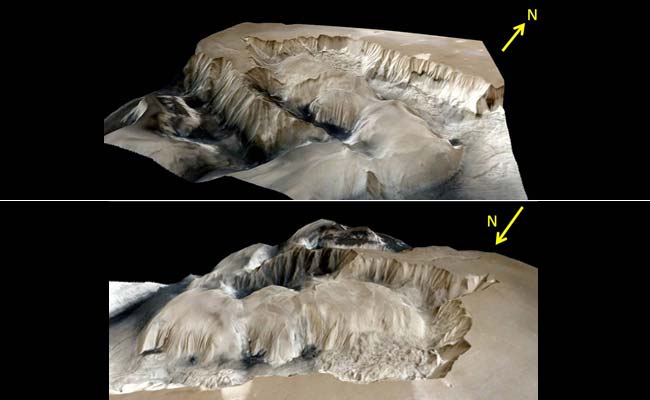
The feature captured with the Mars Colour Camera is called the Opir Chasma; the Mangalyaan took the pictures when it was at an altitude of 1857 km from the surface of the red planet Mars.
The Valles Marineris canyon system is 5000 km long and has many chasmas or valleys. The Opir Chashma is about 62 km wide and is bordered by high-walled cliffs.
 The Ophir Chasma on Mars is part of the largest canyon in the solar system.
The Ophir Chasma on Mars is part of the largest canyon in the solar system.
The Mangalyaan has now become the farthest travelling Indian object and is sending back copious data.
It was from the Red Fort exactly three years ago, on Independence Day 2012, that then Prime Minister Dr Manmohan Singh had first announced that India was heading to Mars.
Mangalyaan cost Rs 450 crores, a fraction of other such missions. India placed the low-cost spacecraft in orbit around Mars in its very first attempt on September 24, 2014, breaking into an elite club of three - only the US, Russia and Europe have successfully undertaken missions to Mars or its orbit.
Put together by the Indian Space Research Organisation or ISRO in a record time of 15 months, it covered the 670 million km to Mars in a 300-day marathon.
In June, the space research organisation or ISRO was presented with the Space Pioneer award for the year 2015 by the US' National Space Society for Mangalyaan.
ISRO is charting a 10-year road map for planetary exploration. New journeys will include a visit possibly to Venus and an asteroid. Repeat visits are also being planned to Mars and the Moon.
Track Latest News Live on NDTV.com and get news updates from India and around the world

